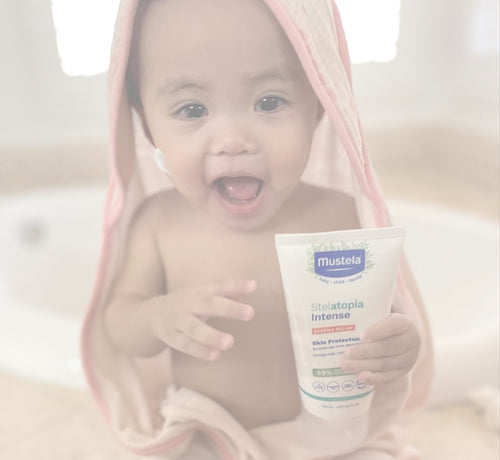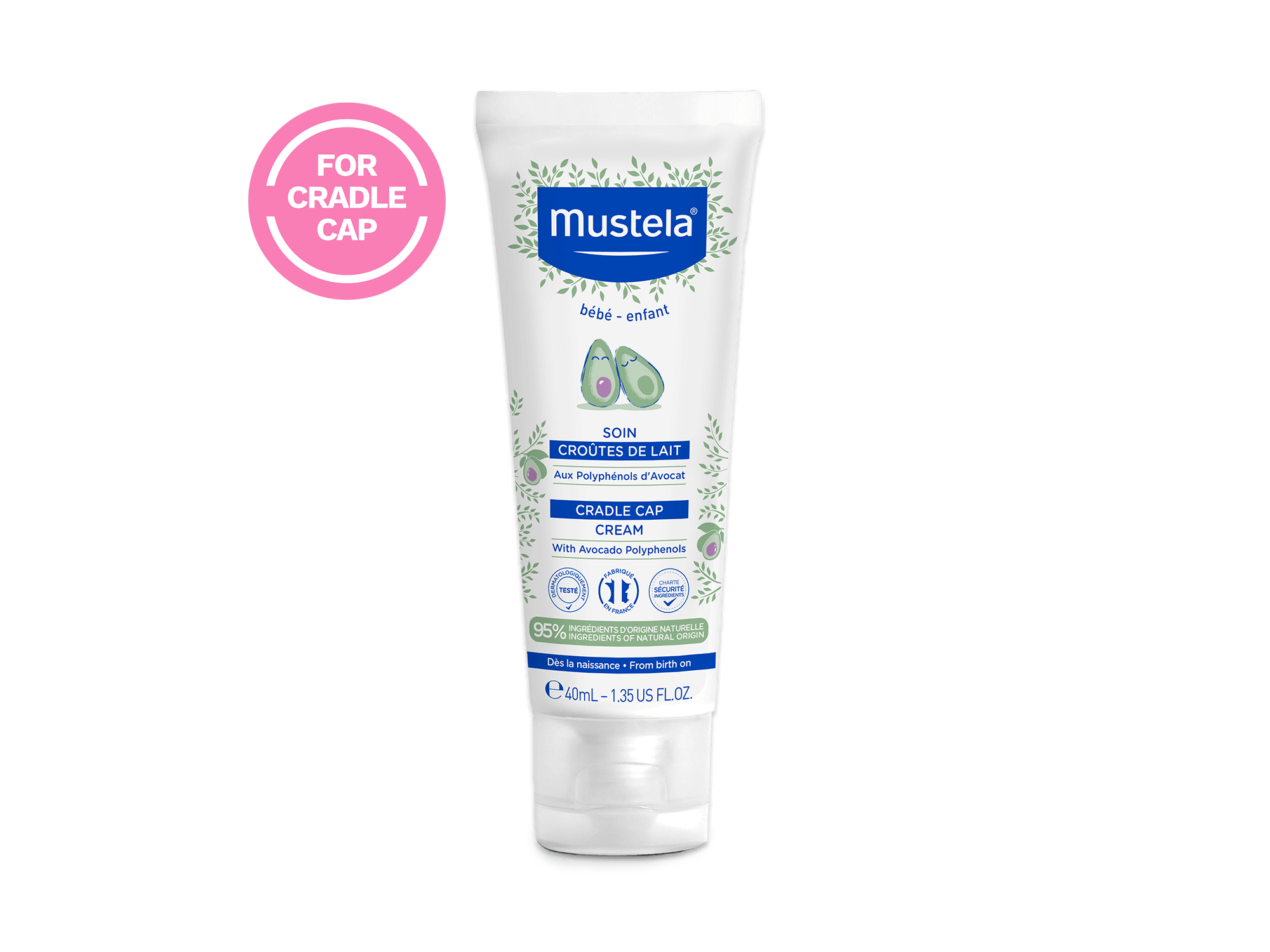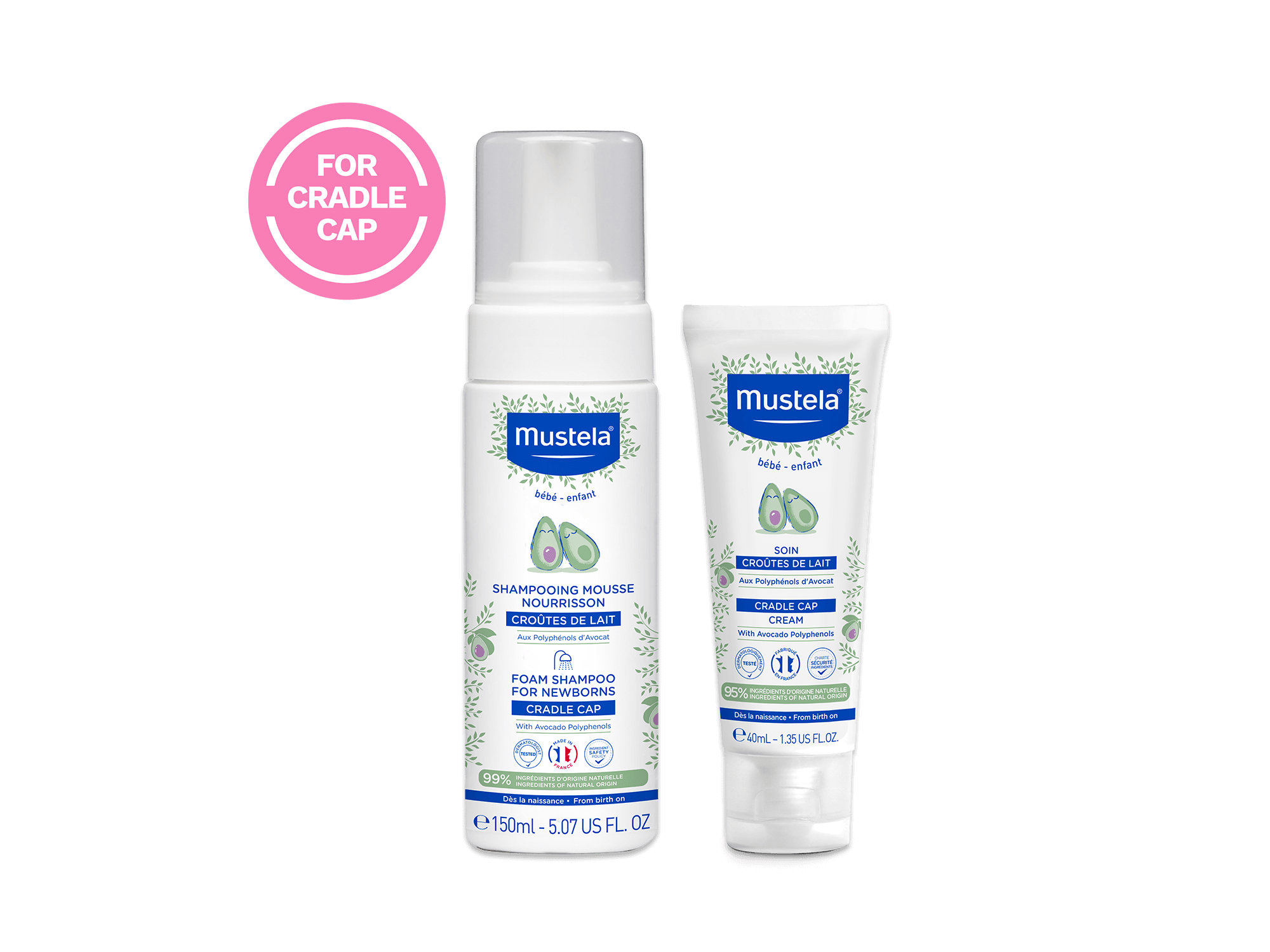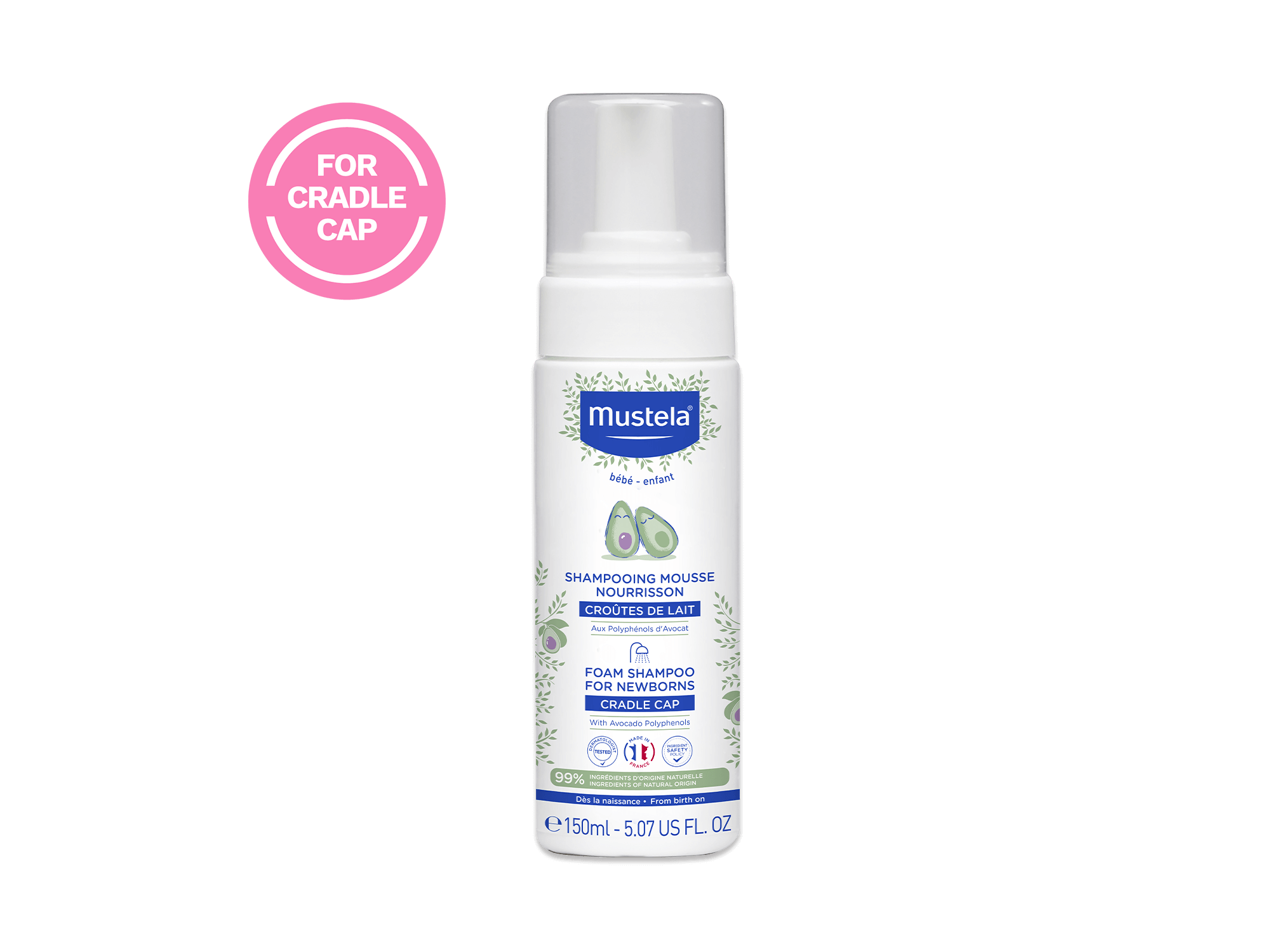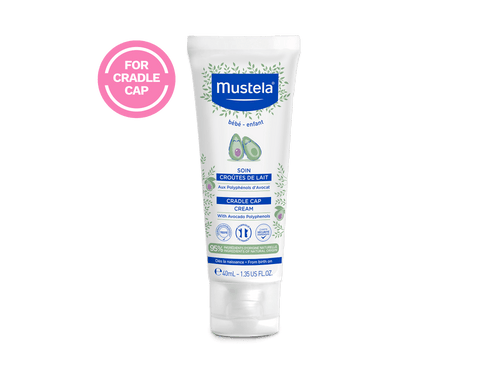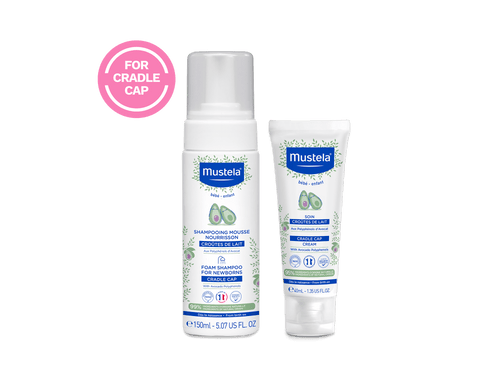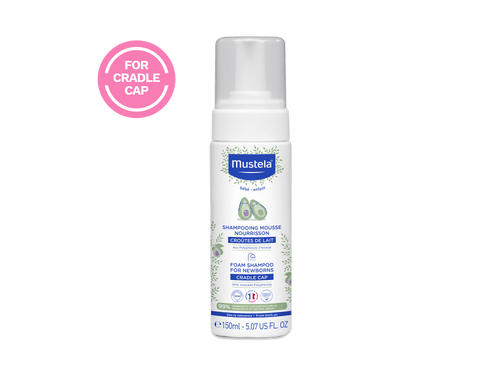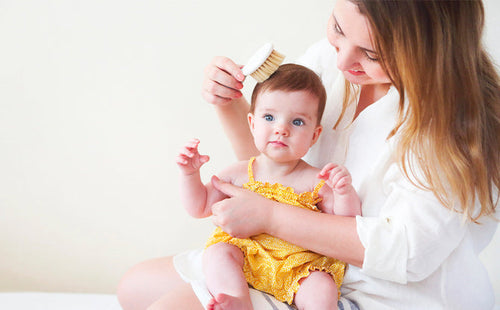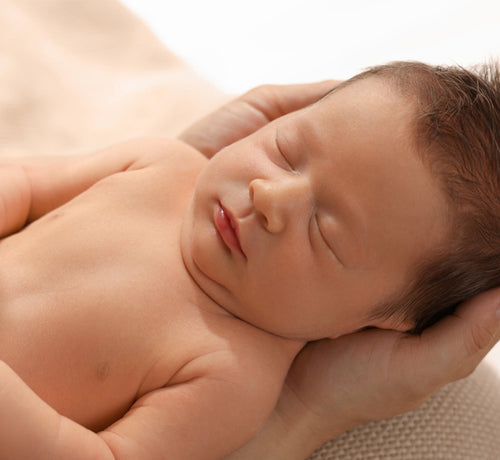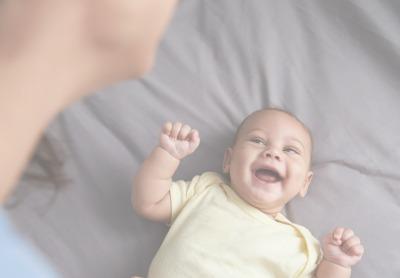Your poor baby has dry, flaky skin. It looks downright uncomfortable, and you’re trying to figure out what’s causing it. Some conditions can be confusingly similar, namely cradle cap vs. eczema.
Don’t worry, neither of these conditions is uncommon for little ones. Baby skin is so sensitive! Find out how cradle cap and eczema are different, the symptoms, and, most importantly, what the best treatment plan is for relief.
Table Of Contents
- Differences Between Cradle Cap Vs. Eczema
- Symptoms Of Cradle Cap Vs. Eczema
- Treatment For Cradle Cap And Eczema
Differences Between Cradle Cap Vs. Eczema

Nobody wants to see their baby suffer with a dry, flaky head. But before trying to address it, it’s important to figure out what’s causing this symptom in the first place.
Some very common conditions might be to blame, including cradle cap and eczema. As the two conditions can sometimes be confused, you must first understand what the differences are between cradle cap vs. eczema to properly treat your little one.
Let’s take a closer look at each of these conditions below.
What Is Cradle Cap?
First, we’ll start with what cradle cap is not. It’s not a condition caused by poor hygiene, allergies, or a bacterial infection. It’s also not contagious.
As we said earlier, no one knows exactly what causes the condition. Some believe it might have to do with hormones that are passed to the baby before birth and cause overactive sebaceous glands. Others believe it has to do with a yeast imbalance, requiring anti-fungal treatments.
With this in mind, let’s get to what we do know: Cradle cap, or infantile seborrheic dermatitis, is very common. It’s estimated that 10% of children suffer from this condition in the first three months of life.
Often affecting children under five years old (and most common in newborns 0-12 months), it normally begins with dry skin, but then it goes a step further. The dry skin develops into crusty, oily bumps on a little one’s scalp. These bumps can also look like white or yellow scales and can be hard to remove.
Something distinctive about cradle cap is its location. The dry, flaky skin tends to be found on the scalp. However, it’s not a hard and fast rule. In some instances, the unhappy skin can migrate to the ears, face, or occasionally the groin area.
Although cradle cap can last for several months, the good news is that it’s not painful, and is usually not itchy!
What Is Eczema?
Eczema, on the other hand, is often itchy. Also referred to as atopic dermatitis, eczema is a pretty common condition, estimated to affect 30% of the U.S. population — mostly children and teens. And about 60% of cases develop in the first year of life.
Although no one knows exactly what causes eczema, some believe it’s due to a weakened skin barrier stemming from genetic or environmental factors. The hydrolipid barrier that is meant to protect the skin is not working at 100%, leaving baby’s skin susceptible to irritants.
Luckily, some little ones outgrow eczema by the time they’re teenagers. However, others have chronic flare-ups throughout their life that require further treatment and maintenance.
When suffering from eczema, patches of baby’s skin will be dry, bumpy, red (or yellow), and, unfortunately, itchy. There are also many irritating factors that can trigger an eczema flare-up. For example, hot and cold weather, certain products, like perfumes or detergents, food allergies, and even stress can trigger a flare.
The Differences

Although they can look similar, there are some pretty clear differences between cradle cap vs. eczema.
First of all, the itch. As we mentioned, cradle cap is generally not itchy, while eczema tends to have an itchy component. Second, whereas cradle cap is oily to the touch, skin affected by eczema feels dry.
Third, the location of the irritated skin can help determine what’s causing it. For example, if it’s on the scalp, it’s more likely to be cradle cap.
Eczema, on the other hand, can appear anywhere — though it’s often found on the face, hands, and in skin folds. In addition, eczema can run in families, so if you have a family history of the condition, it’s possible this is what your baby is suffering from.
Symptoms Of Cradle Cap Vs. Eczema
Symptoms Of Cradle Cap
As we mentioned above, if you touch your little one’s scalp and find it oily, then you’re most likely dealing with cradle cap. Here are a few more of the most common signs of cradle cap:
- Crusty, oily bumps on the scalp
- Thick crusts
- Skin flakes
- Scales that are white, yellow, or brown
- Any of the above localized on the scalp, face, ears, or sometimes groin area
Symptoms Of Eczema
Again, eczema is often identifiable by its itchiness. But here is a more comprehensive list of key eczema symptoms:
- Irritation that is red, reddish-purple, brownish, or gray depending on the baby’s skin tone
- Itchy, dry skin
- Flaky skin
- Irritated skin
- Swelling
- Rough skin
- Red patches on skin (that can ooze)
- Rash located anywhere on the body, but most often on the face, hands, and skin folds
Treatment For Cradle Cap And Eczema
If you’re still confused about what your baby is suffering from, don’t worry. Your pediatrician can normally see the difference between cradle cap vs. eczema when doing a physical exam. And if even they’re not sure, they can do a skin biopsy to confirm.
Once you know what it is, it’s time to treat the condition by soothing the skin! Your little one will thank you.
Common Treatments For Cradle Cap
The good news is cradle cap has a pretty straightforward fix.
Our first recommendation is to only bathe your baby one time a day — and don’t make bath time too long. This can further dry out their skin, making the sebaceous glands release too much oil (the opposite of what you want!).
The right products will help reduce the chances of getting or keeping this condition, too. So a good moisturizer and shampoo are key.
Mustela Cradle Cap Duo includes a Cradle Cap Cream that eliminates flakes by keeping the scalp moisturized (which can reduce the likelihood of it coming back). Follow that with our Foam Shampoo for newborns to gently exfoliate your baby’s scalp.
You also might want to try brushing your little one’s scalp with a soft brush while they’re in the bath or massaging it with a towel to loosen the flakes.
Common Treatments For Eczema
Depending on how severe the eczema is, a doctor may suggest one or a combination of several treatments. These may include moisturizers, prescription corticosteroid creams, ointments, inhibitors, and other oral medications.
As some of the treatments are only for older children, a doctor’s preferred course of treatment will depend on the child’s age and the severity of the condition. It’s important to know that long-term use of medications, especially steroid creams, can be dangerous.
You might choose to manage the condition naturally. There are many simple ways to do this, including:
- Choosing clothing made from natural fabrics. Mustela Stelatopia Skin Soothing Pajamas are a great choice, as they are both 100% natural cotton and moisturize skin throughout the night.
- Avoiding stress, allergens, and anything else that triggers the condition
- Always opting for natural ingredients in your care products, such as sunscreen, lotions, soaps, baby wipes, diaper creams, shampoos, and laundry detergents
- Taking a bath — a short, lukewarm bath can soothe skin, especially if you use an eczema-friendly bath oil, like our Stelatopia Cleansing Oil.
- Moisturizing! Because dry skin can trigger eczema, keeping your skin moisturized is key. Some popular Mustela moisturizers include our Stelatopia Emollient Cream, Stelatopia Emollient Face Cream, and Stelatopia Intense Eczema Relief.
Managing eczema with natural remedies can result in fewer flare-ups, leaving your little one more comfortable.
Better Skin Days Ahead!

As you can see, it’s not so hard to tell the difference between cradle cap vs. eczema once you know what to look for.
Determining the location of the affected skin and figuring out whether it’s itchy are the first steps in clarifying the underlying condition. But if you’re still unsure, your pediatrician can help!
Treatment can be as easy as a new shampoo or cream to moisturize your child’s skin. At Mustela, we offer products formulated to help both cradle cap and eczema. The sooner your baby’s skin is happy, the sooner everyone can breathe a sigh of relief!


